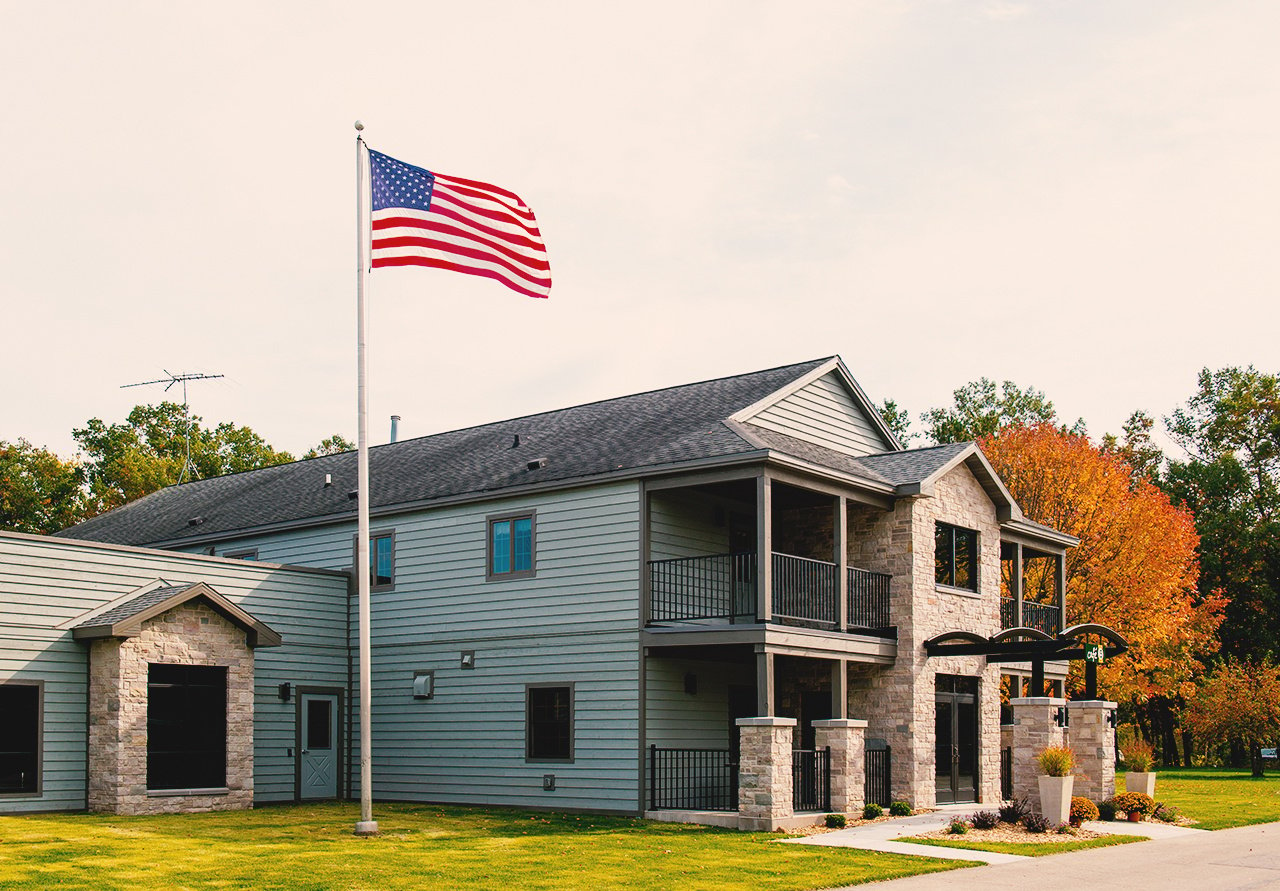
Imagine achieving a lifelong dream. Would you feel on top of the world? Lance Fox did on both counts as he stood on the summit of Mount Everest. As a resident of nearby New London, Wisconsin, Lance was thrilled to share his experience with students at Rawhide’s Starr Academy. He told the guys, “If you have a dream and you believe in it—anything’s possible.” He is living proof.
The Dawn of a Dream
Lance’s dream came to light in November 1997. His son was born prematurely, which meant a longer hospital stay. To pass the time, Lance picked up a book entitled Everest: Mountain without Mercy and was profoundly inspired. The captivating idea of climbing to the top of the world yielded a dream and a goal of climbing Mount Everest. He thought of his new son who entered the world too early and of his father who lost a battle with cancer 11 years prior. Life was short. A few years later, Lance signed on to climb Mount Everest. He had a year to train. Pedal to the metal, he was all in.
Preparing for Climbing Mount Everest
Central Wisconsin’s terrain is flat compared to the Himalayan mountain range in South Asia, home of Mount Everest. Nevertheless, Lance needed to train, so he got creative. He stepped into his down snow suit, strapped on his climbing boots, weighed down his backpack with water jugs, and headed over to Mosquito Hill. At a mere 960 feet above sea level, it’s no comparison to the 29,000-foot Everest, but Lance made it work. He climbed up and down the hill as many times as his schedule allowed, especially when the forecast included a snowstorm.
When the Wisconsin winter wind picked up, creating big snow drifts, he took a ladder and set it parallel to the ground across two drifts. This practice eventually paid off at one of the toughest parts of climbing Mount Everest—crossing the glacier crevasses. Lance was ready for the real thing.
Finally, after a year of physical training and mental preparation, Lance said emotional goodbyes to his family and friends and boarded the plane to Nepal. He touched down two days later in Kathmandu and met his teammates for the first time—28 people from all over the world.
A Risky Landing in the Himalayas
Lance and his team spent a few days in Kathmandu before boarding a small plane to one of the most dangerous airports in the world — Tenzing-Hillary Airport, named after the first two individuals known to reach the summit of Mount Everest, Tenzing Norgay and Edmund Hillary. The airport’s short runway contributes to its risk. Plus, obstacles at either end of the runway don’t allow for much error—on one edge, a 2,000-foot cliff and on the other, a stone wall. “If I had any hair,” Lance recalls “it’d be standing on end during the landing.”
At this point, Lance’s team was 9,400 feet above sea level. They waved good-bye to the plane, the last motor vehicle they would see or ride in for the next 2 months. They were ready to begin the 9-day trek to Everest Base Camp.
Getting Acclimated or “Catching One’s Breath”
Lance’s team had a 40-mile journey ahead of them—just to the Mount Everest base camp! They spread the trip over 9 days to allow for acclimatization, the process of adjusting one’s body to a higher elevation. Lance explained that a full breath at the summit of Mount Everest brings in only a quarter the amount of oxygen we get at sea level. So it’s important to increase elevation gradually in order for the body to adjust.
On the trek to base camp, Lance caught his first glimpse of Mount Everest. He could hardly believe it. This was finally happening.
The team arrived at base camp, roughly 17,000 feet above sea level, yet about 2 vertical miles below Mount Everest’s summit. They rested, regrouped, planned, and continued the acclimatization process. Over the next few weeks, Lance and his team climbed Lobuche, a mountain that stands 9,000 feet below Everest. They ascended the mountain twice, spending the night at the top during the second jaunt.
As they climbed Lobuche, their team leader, Russell Brice, remained at the base camp and coached them purposely from a lower elevation. The human thinking process can get fuzzy when oxygen levels fall well below the normal level, increasing the risk of faulty decisions. So the team leader remains at the lower elevation to guide them in decisions. Russell watched them through a telescope and, kept in contact with them using two-way radios throughout the entire expedition to ensure their safety.
After two trips up Lobuche, Lance and his team were finally prepared for the real thing. They still had a long journey ahead of them—ascending AND descending Mount Everest safely. Lance did not take the expedition lightly. Everest demands caution and intellect from the very beginning. He felt ready.
About Lance Fox
Lance is a veterinarian, who resides near New London, Wisconsin with his wife and two kids. He founded Healthy Yak, an organization that promotes health and welfare for yaks and other animals in the Khumbu Valley of Nepal, near Mount Everest.
Lance wrote a book, No Place but UP!, that documents his Mount Everest experience. He was also featured on Discovery Channel’s Everest Beyond the Limit. Lance has spoken to over 20,000 people about his journey on Everest. We are grateful he chose to speak at Rawhide.










